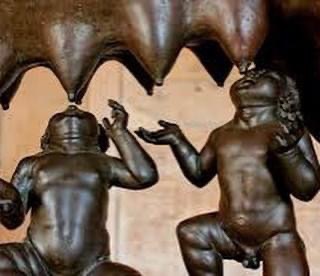2773rd Birthday of the Eternal City
- Lori-Ann Touchette
- Apr 22, 2021
- 2 min read
Buon compleanno Roma. Today marks the official 2773rd birthday of the eternal city. Romulus, the first king of Rome, and his twin brother Remus were said to have been found being suckled by a she-wolf on the slopes of the Palatine hill. This 2nd century AD Campana relief found reused in the Baths of Constantine (now in Berlin) shows the shepherd Faustulus looking rather surprised at the sight. Livy (1.4) calls into question not only the identify of the twin’s father but also the existence of the she-wolf. He suggests that the Vestal (Rhea Silvia) was raped, and having given birth to twin sons, named Mars as the father, either because she believed it or because it was more convenient to say so. As for the she-wolf, he poses an alternative reading in which the wife of the shepherd was called “lupa” due to her rather loose character. The Latin word for brothel is Lupanar (e.g. at at Pompeii, a wolves’s den for prostitutes (“lupa” in the singular).
The most illustrious representation of the myth is the bronze Lupa Capitolina that has become an icon of Rome. The statue’s date is as debated as the early history of Romulus and Remus. In the Capitoline Museums since 1781, the she-wolf is traditionally identified as an Etruscan (or Magna Graecia) work of c. 480 BC whereas the twins were added in the late 1400’s perhaps by Antonio Pollaiolo. Conservation in 1997-2000 however led some scholars to posit a medieval date for the statue based on its casting technique (direct lost wax as opposed to the indirect method used in the majority of ancient Graeco-Roman bronzes) and radiocarbon and thermoluminescence analyses that place it in the 11th-12th centuries. The proposed date though conflicts with the first mention of the statue already in the Carolingian period (9th century). The only constant is the identification of the source of the CLAY core material as the Tiber valley.
#romacittàdellaceramica #romeceramiccity #terracotta #ceramics #lupacapitolina #romulus #foundationofrome @ Musei Capitolini

















Comments